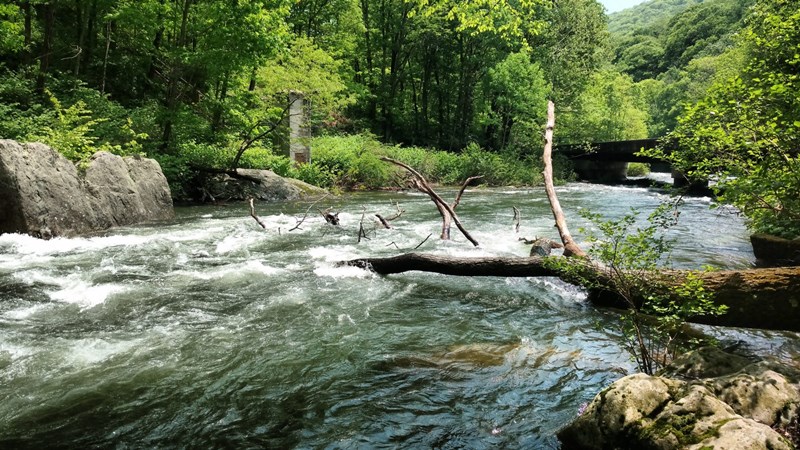By: David Brown
The controversy around the removal of strainers on recreational rivers is not new, but it is likely to become more prominent as fires, beetle kill and milder climates lead to more wood in recreational rivers.
American Whitewater ranks strainers as contributing to 196 deaths on whitewater rivers since 1975, fifth among the leading causes. If all flatwater fatalities were included, the number would be significantly higher. So, you must ask why many state and federal agencies are creating permitting and management plan requirements governing the removal of strainers from popular paddling rivers.

Wood in rivers creates fish habitat, which is a primary consideration. Agency protocols do not appear to be overruling public safety where recreational use is prominent at this point. Nonetheless, the permitting requirements and the potential for delays have probably led some outfitters to take action on strainers and obstructions before asking for permission and getting wrapped up in a lot of agency and user group handwringing. That is not a course of action AO recommends. Some purist groups quixotically oppose the removal of strainers and obstructions, which they regard as a natural occurrence that enhances the wilderness river experience (in part because it discourages commercial use).
This issue came to our attention when an outfitter in the northeast called to report that a strainer and root ball in a popular recreation river presented a threat to paddlers. The state told him he could only use hand-tools. Initially, this was interpreted to mean no chain saws. How do you remove a huge root ball with hand tools? Fortunately, the interpretation was later corrected to mean heavy equipment that scarred the riverbanks, which then authorized chainsaws as a hand-tool.
When the issue arose, we consulted the River Management Society; Executive Director Risa Shimoda got some interesting responses from state agency representatives, which will help you understand the issue if you encounter it.
State Regulations Regarding the Removal of Strainers
At the state level, removal of strainers and similar obstructions may be covered by state regulations. Increasingly, woody debris is seen as a natural occurrence that provides and protects aquatic habitat. Still, consideration for recreation influences the decision on whether the obstruction should be removed.
A state official in New Hampshire described their rules regarding the removal of strainers this way: ” I told him he’d need a permit if his proposed tree removal would create impacts; hand work, including the use of chain saws, would not be likely to do so. I told him we rarely permit the use of heavy equipment in waterbodies, that utilizing winches from adjacent upland would be acceptable, and that they should manage the size of the pieces to mitigate potential impacts to the channel and bank during winching. I told him that the Bureau considers impacts the size of a skidder rut as dredge so that he could visualize them.”
Oregon’s process is covered by Oregon Marine Board regulations: ORS 830.160 Board authority to remove obstructions from water: In addition to any other authority to promote safe boating pursuant to this chapter, the State Marine Board may cause the removal of any obstruction consisting of logs, rocks or other debris resulting from natural causes from the waters of this state if the board finds the obstruction to be an extraordinary hazard to boating safety. The board may pay the cost of such removal from amounts reserved therefor in the account created by ORS 830.140.
Federal Agency Regulations
Federal agencies have acted quickly to remove strainers and obstructions, as occurred on the Middle Fork of the Salmon River in Idaho in 2006. 200 rafters were on the river upstream of a blowout at Pistol Creek with no awareness that they could be floating into a death trap. A blockage such as this required highly qualified, professional crews including certified blasters. It was not a job for uncertified amateurs. Blasting is only done in extreme circumstances since that intervention can create new hazards, such a sharp rocks and undercuts.
At the federal level the removal of woody debris will likely be governed by a river management plan. At their 2018 conference, The River Management Society included a presentation on the removal of strainers and obstructions. One slide from the Snake River Wild and Scenic River (W&S) Management plan describes removal protocols when woody debris obstructs W&S rivers. These protocols are likely to be adopted beyond the Wild and Scenic River environment as they migrate to state agencies.
Removal (minimum necessary) may be considered under the following conditions:
• Human-induced source
• Recreation considerations:
• % Channel blockage: >2/3; main flow through LW; little option for safe passage or portage
• Obscured hazards: Hidden, unavoidable, in a roaded area, highly difficult to portage, likely to entrap a human, on a frequently paddled stretch of a Class II-IV section.
• Other Considerations
• Critical Infrastructure: Removal may be allowed if threatening to impact exiting critical infrastructure.
Do strainer removal constraints threaten paddlers' lives?
Some would argue that the requirement for permits protects the lives of unqualified actors. At this point, there is no evidence to suggest that the strainer removal bureaucracy threatens paddlers lives. But it is possible and likely that in some areas there could be delay in strainer removal, due in part, to the hazardous nature of the work and environmental considerations that are embodied in the permit or decisions to remove them. At the federal level, compliance with NEPA could be required. At both the state and federal level an emergency declaration may be needed to cut through the red tape.